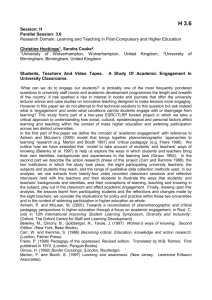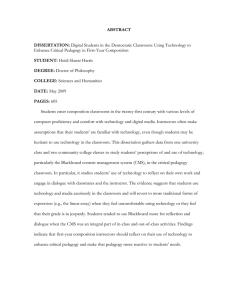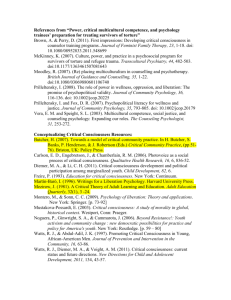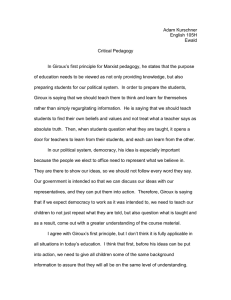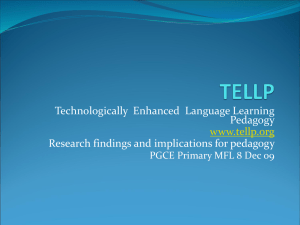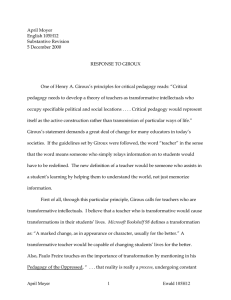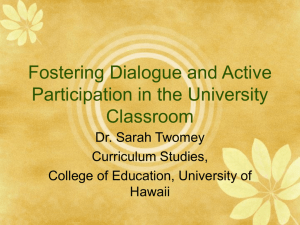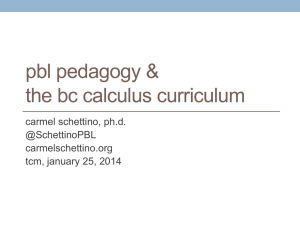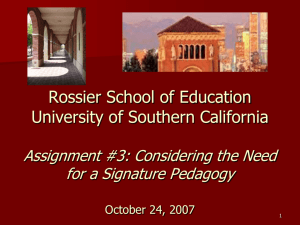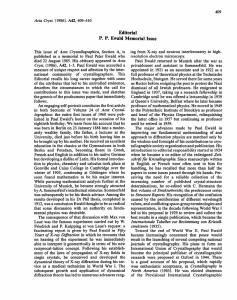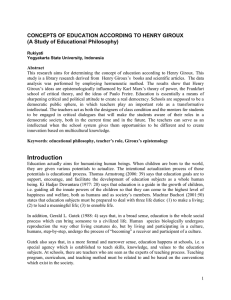Conversation
advertisement
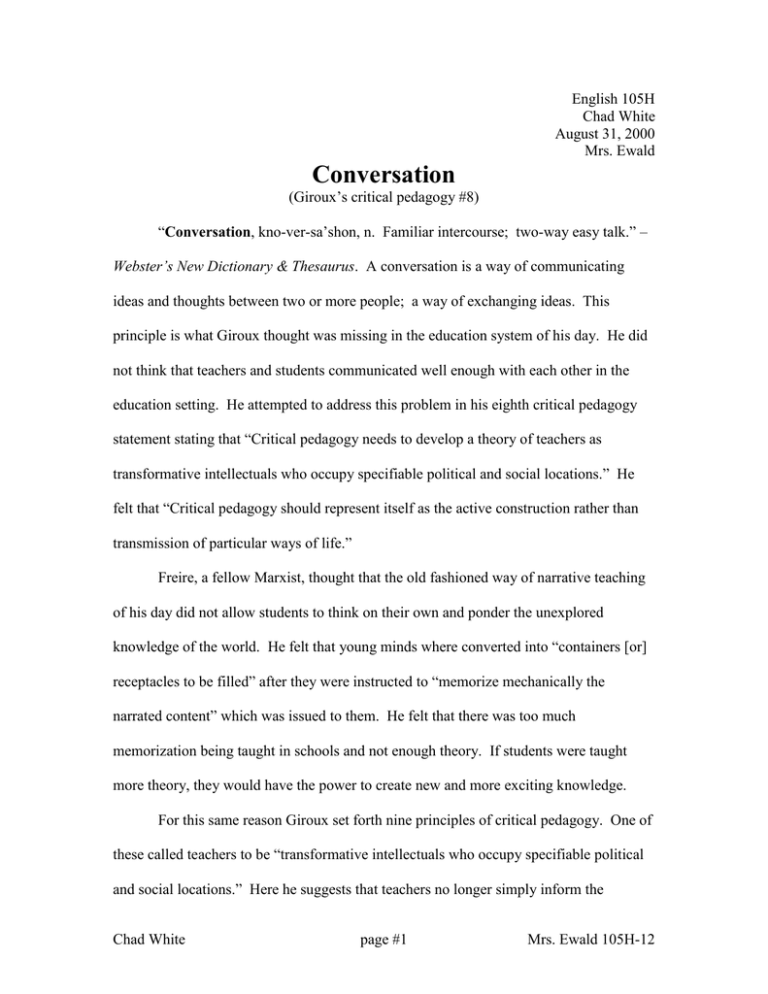
English 105H Chad White August 31, 2000 Mrs. Ewald Conversation (Giroux’s critical pedagogy #8) “Conversation, kno-ver-sa’shon, n. Familiar intercourse; two-way easy talk.” – Webster’s New Dictionary & Thesaurus. A conversation is a way of communicating ideas and thoughts between two or more people; a way of exchanging ideas. This principle is what Giroux thought was missing in the education system of his day. He did not think that teachers and students communicated well enough with each other in the education setting. He attempted to address this problem in his eighth critical pedagogy statement stating that “Critical pedagogy needs to develop a theory of teachers as transformative intellectuals who occupy specifiable political and social locations.” He felt that “Critical pedagogy should represent itself as the active construction rather than transmission of particular ways of life.” Freire, a fellow Marxist, thought that the old fashioned way of narrative teaching of his day did not allow students to think on their own and ponder the unexplored knowledge of the world. He felt that young minds where converted into “containers [or] receptacles to be filled” after they were instructed to “memorize mechanically the narrated content” which was issued to them. He felt that there was too much memorization being taught in schools and not enough theory. If students were taught more theory, they would have the power to create new and more exciting knowledge. For this same reason Giroux set forth nine principles of critical pedagogy. One of these called teachers to be “transformative intellectuals who occupy specifiable political and social locations.” Here he suggests that teachers no longer simply inform the Chad White page #1 Mrs. Ewald 105H-12 students of the way he/she perceives a subject, but rather sets forth the guidelines and asks the students to come up with their own thoughts on the subject. Instead of judging the students’ answers as either correct or incorrect, the teachers would look at the students’ responses subjectively. The teacher may give feedback and additional thoughts. The teacher should become more like the students and the student should become more like the teacher. If they do so, “they become jointly responsible for a process in which [they] all grow.” Another benefit of this type of education occurs when students and teachers build their thoughts and ideas from one another. With this building circle of thoughts and ideas, new ideas and new theories are often discovered and new points of view may be taken. Students and teachers alike see subjects in light that would have never been shed had they been subdued to this conventional ways of thinking. One class that this type of learning would be especially benefital in could be a human development class where students may tell about personal experiences that they may have had. Without this two-way communication there stands a “lack of creativity”. Without looking upon a subject from a different angle, better and more efficient methods could never be heard. Creativity lies in the hands of those who look outside the realm of the textbook world. Creativity cannot be taught; it must be discovered. This is very evident in the fine arts. If every performer perceived the music in the very same way, there would be no way to separate the mediocre from the great. No compositions would ever stand out from the rest. This intellectual intercourse between teacher and student also puts forth a new concept of learning. Freire called this learning “Problem-posing education.” Problem- Chad White page #2 Mrs. Ewald 105H-12 posing education teaches students to learn from their own thoughts and experiences rather than “memorizing” the thoughts and experiences of another. Problem-posing education helps to prepare students for the rest of their lives, where they will undoubtedly face problems from day to day. I believe that in a classroom of today, problem-based learning is more evident than it was in Freire’s time. In my English 105H class, discussion occurs frequently and students review each other’s work and learn from each other. In chemistry courses I have taken in high school, laboratory experiments were conducted to test theories and actually see how and why chemicals react to each other the way they do. Today, problem-based learning has been rightfully injected into many levels of education. But at the same time, there is room for improvement. More steps can be taken to improve our quality of education using problem-based learning. New areas remain to be discovered and new theories remain to be tested. I believe that all areas of knowledge can be explored further with the help of more problem-based learning. In conclusion, Giroux recognized a need for educational improvements and offered his nine principles for critical pedagogy. His eighth principle dealt with communication between teachers and their students. He called for a learning atmosphere with more equality and respect for new ideas. He imagined a learning condition that promoted creativity and evolution while preserving ethicacy and the well being of all people. Being an optimist myself, I agree with these ideas and wish to promote them in the future. As many steps have been taken in this direction, much new territory is left to be discovered in this new frontier of “conversation.” Chad White page #3 Mrs. Ewald 105H-12

